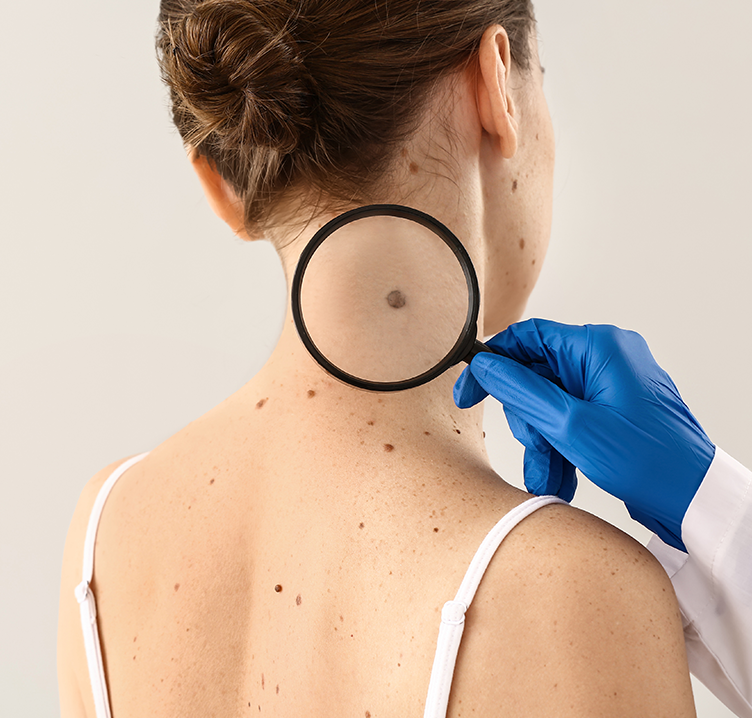Melanoma is one of the most malignant cancers. Detected at an early stage, it offers a good chance of being cured. The National Health Fund reminds us of the prevention of this dangerous cancer. The end of the holidays is a good time to check your moles and skin pigmentation.
Melanoma is an aggressive cancer because it grows rapidly, metastasises and is often resistant to treatment. We usually associate it with lesions on the skin, but it can also appear in the mucous membranes of the mouth, nose or eyeball. Data from the National Cancer Registry for the period 1980-2020 shows that the incidence of this skin cancer has increased by 300% over the past 30 years. As emphasised by specialists, approximately 3 500 new cases of melanoma are diagnosed in Poland each year, and approximately 1 400 people die.
Are you in a risk group?
The risk of developing melanoma increases, among others, in people with fair skin, red or blonde hair, who have a large number of pigmented nevi, who have suffered sunburns, especially in childhood, who tolerate the sun poorly, who tan with great difficulty, who stay in full sun for more than an hour a day, and those with a family history of melanoma or other skin cancers and who tan in tanning beds.
How to get tested?
Melanoma detected at an early stage is mostly curable. This is why early diagnosis of this cancer is so important. Prevention is an effective weapon in the fight against melanoma.
- Let's take a close look at our skin, at least once a month we should check ourselves our moles, freckles, whether any worrying changes have appeared," says Beata Kopczyńska, spokesperson for the National Health Fund.
How to do it? You can use a special melanoma checklist, the ABCDE method, in which we consider five criteria for skin lesions: asymmetry, edges, colour, large size and evolution.
- A (asymmetry) - asymmetry, e.g. a birthmark "spilling over" to one side
- B (borders) - edges ragged, having coarsening, irregular, uneven
- C (colour) - unevenly distributed, often with pinpoint concentration of pigment, many colours from red to black
- D (diameter) - large size, lesion over 6 mm in diameter
- E (evolution) - evolution, changes in the mole, i.e. changing size, colour, enhancement of a hitherto flat lesion, bleeding, itching or formation of
- If you notice any worrying changes you should consult your doctor. I would also encourage you to take advantage of examinations as part of the national skin cancer prevention programme," adds the spokeswoman.
Who can benefit from the prevention programme?
The programme is open to people aged between 50 and 64, as well as older people who are still active. The nationwide skin cancer prevention programme also covers younger people, from the age of 15 up to the age of 49, when a doctor has identified worrying skin lesions. As part of the programme you will have a consultation with your primary care doctor and, if necessary, the doctor will refer you for a dermoscopic examination with consultation by a specialist doctor or a videodermoscopic examination with consultation by a specialist doctor.
- Information about the prevention itself, the nationwide programme and which facilities are implementing it can be found on the National Health Fund's website, or on the patient.gov.pl website, as well as at a National Health Fund facility in person with a prevention and health promotion advisor, the spokeswoman suggests. Read more:

